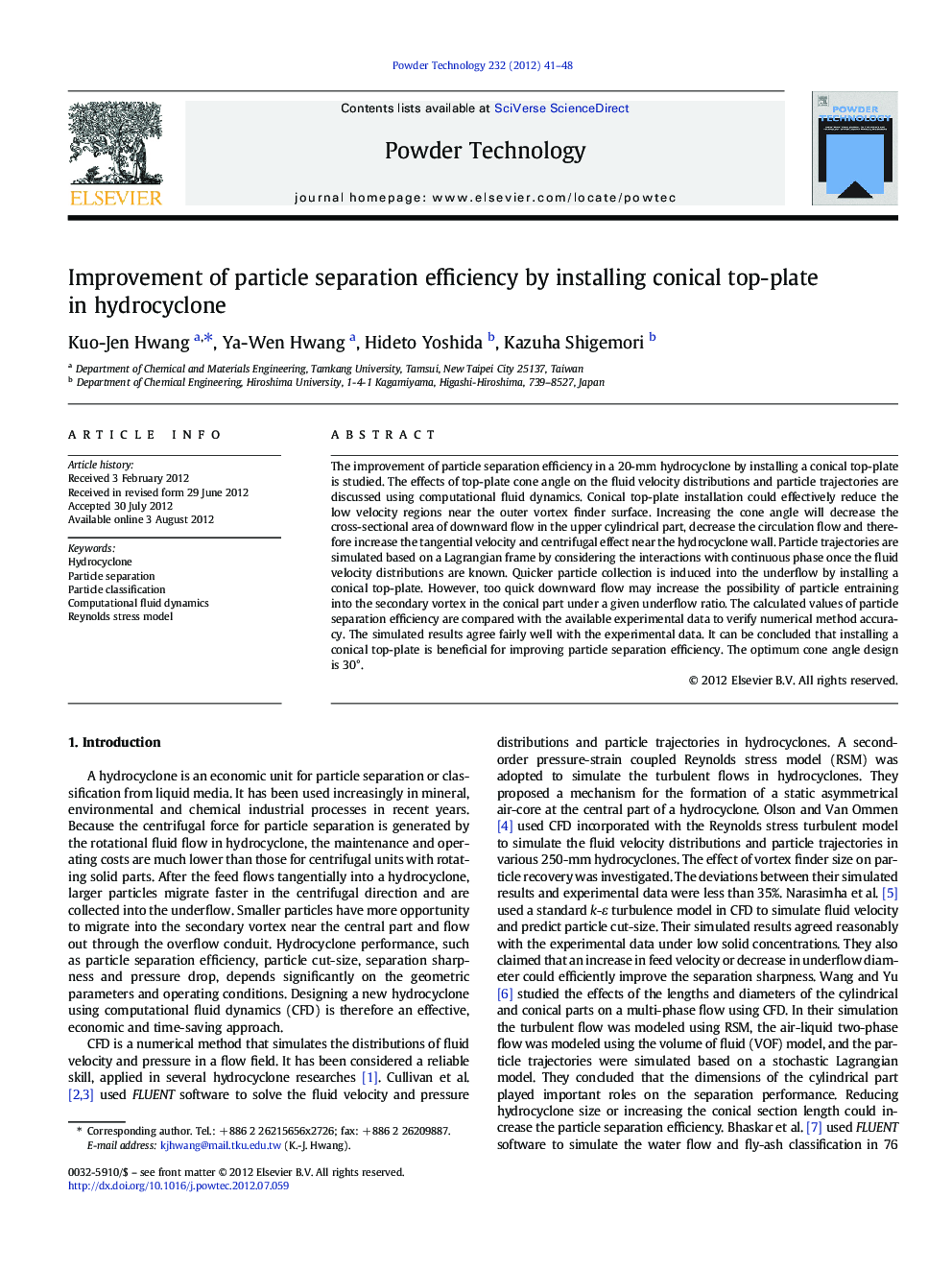| Article ID | Journal | Published Year | Pages | File Type |
|---|---|---|---|---|
| 236956 | Powder Technology | 2012 | 8 Pages |
The improvement of particle separation efficiency in a 20-mm hydrocyclone by installing a conical top-plate is studied. The effects of top-plate cone angle on the fluid velocity distributions and particle trajectories are discussed using computational fluid dynamics. Conical top-plate installation could effectively reduce the low velocity regions near the outer vortex finder surface. Increasing the cone angle will decrease the cross-sectional area of downward flow in the upper cylindrical part, decrease the circulation flow and therefore increase the tangential velocity and centrifugal effect near the hydrocyclone wall. Particle trajectories are simulated based on a Lagrangian frame by considering the interactions with continuous phase once the fluid velocity distributions are known. Quicker particle collection is induced into the underflow by installing a conical top-plate. However, too quick downward flow may increase the possibility of particle entraining into the secondary vortex in the conical part under a given underflow ratio. The calculated values of particle separation efficiency are compared with the available experimental data to verify numerical method accuracy. The simulated results agree fairly well with the experimental data. It can be concluded that installing a conical top-plate is beneficial for improving particle separation efficiency. The optimum cone angle design is 30°.
Graphical abstractThe effects of top-plate cone angle on the fluid velocity distributions and particle trajectories are discussed using computational fluid dynamics. The simulated results of particle separation efficiency agree fairly well with the experimental data. Installing a conical top-plate is beneficial for improving particle separation efficiency. The optimum cone angle of top-plate is 30°.Figure optionsDownload full-size imageDownload as PowerPoint slideHighlights► Hydrocyclone efficiency was improved by installing conical top-plate. ► The conical top-plate reduced the low velocity regions near the vortex finder. ► Installing a conical top-plate led to quicker particle collection. ► The simulated particle separation efficiency agreed well with experimental data. ► The optimum cone angle of top-plate was 30°.
